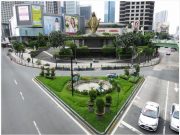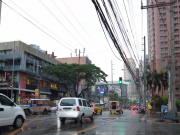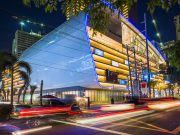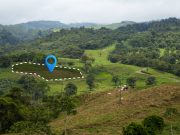The Post-Pandemic Era.
The global pandemic has triggered a profound transformation in our lives, disrupting how we live, work, and envision the future. Undeniably, the real estate sector is not immune to this sweeping change, as consumer preferences and behaviors have shifted. It is imperative to comprehend the emerging trends that define the post-pandemic era.
A Glimpse of the Real Estate Industry
Fueled by economic growth through property development, sales, and rentals, the real estate industry brings together agents, brokers, developers, managers, and investors, striving to stay competitive in a dynamic market by being informed about trends and consumer preferences.
Adapting to Changing Consumer Preferences
Adaptability to changing consumer preferences is necessary for today’s business landscape. Tailored solutions for attracting and retaining customers are crucial for gaining a competitive edge, especially in the post-pandemic real estate industry.
Shifts in Consumer Preferences
As people’s needs and desires evolve, the real estate industry is also adjusting to keep up with the demands of the modern market. Today, there are several factors that buyers take into account when searching for their dream home.
A. Remote Work and Home Office Spaces
As organizations adjust to the new normal, remote work has become the prevailing practice for many companies due to the pandemic. In a LinkedIn survey, more than half of the respondents believe that remote work is practical, and over half of those surveyed want a fully remote work setup. In the Philippines, over half of the workers were already working from home pre-pandemic, which spiked to 85% during the pandemic. It is not surprising that almost half of them are now preferring to stay remote. Other Southeast Asian countries are also optimistic about the long-term viability of remote work. As remote work is becoming a norm, the industry is adjusting to the increasing trend of home office spaces, indicating its long-term viability.
1. Growing need for dedicated home office spaces
With the rise of remote work, people are searching for dedicated spaces to boost productivity and efficiency while working from home. As a result, there is an increasing demand for homes that offer designated office areas, ranging from spare bedrooms to garages and lofts.
2. Flexibility in location preferences
The pandemic has also resulted in more flexibility in location preferences. With the ability to work from home, many individuals are considering moving to areas that offer more affordable housing, better quality of life, or are closer to family and friends. This trend has led to a surge in demand for homes in suburban and rural areas, as well as in smaller cities and towns.
| Properties with versatile spaces for dedicated work areas are in high demand. Access to amenities such as fast internet and efficient office equipment is now a priority for consumers. Developers are integrating these features into their designs as remote work and home office spaces gain popularity, shaping the future of the real estate market. |
Sources:
As remote work sweeps the U.S., 55% say it can succeed in their industry;
Remote Jobs in Southeast Asia: A Future Trend?;
COVID-19’s Impacts on Housing Markets: Introduction – PMC;
Demand for residential homes outside Metro Manila will continue to grow | Rizal Raoul S. Reyes
B. Health and Well-being Considerations
In response to the changing consumer preferences brought about by the pandemic, real estate trends are placing a greater emphasis on health and well-being considerations. This rising trend aligns with the advocacy of the Global Wellness Institute, promoting a holistic wellness lifestyle within the realm of real estate.
1. Focus on Healthier Indoor Surroundings
One of the primary considerations for wellness-focused real estate is creating healthier indoor surroundings. To achieve this, developers are paying closer attention to indoor air quality, ventilation, and lighting. For example, high-efficiency air filtration systems can help reduce airborne pollutants and allergens, while ample natural lighting can improve mood and productivity.
2. Amenities Catering to Physical and Mental Wellness
Wellness-focused real estate is on the rise, offering amenities that promote physical and mental well-being. With features like yoga rooms, wellness centers, and relaxing outdoor spaces, these communities aim to create healthier living experiences. Developers are meeting the demand by incorporating fitness centers, spas, green spaces, air purifiers, and non-toxic materials. Prioritizing health and well-being is becoming increasingly essential.
| The post-pandemic era has renewed its focus on health and well-being, and the real estate industry is adapting accordingly. By offering healthier indoor surroundings and amenities that cater to physical and mental wellness, industry players are providing consumers with a wide range of options that prioritize their overall well-being. |
Sources:
Global Wellness Institute: Wellness Lifestyle Real Estate & Communities
C. Sustainable Eco-friendly Features
International Finance Corporation (IFC), a member of the World Bank Group, urged the Philippine building and property sector to attract more investments in green buildings in 2017. By leveraging policy support, tax benefits, educational programs, and energy savings, green developments in the country with the potential to seize 20-25% of the market by 2025.
Environmental sustainability is gaining momentum, especially amidst the pandemic. Homebuyers and office renters now prioritize eco-friendly properties with energy-efficient appliances, systems, and sustainable materials. Real estate professionals must highlight green features to attract environmentally conscious buyers.
1. Growing interest in energy-efficient homes
Real estate developers are adopting cutting-edge technology and renewable energy sources like solar panels and wind turbines to address environmental concerns. This proactive approach aims to reduce energy consumption and minimize environmental impact. With the growing awareness of our environmental impact, there is a significant rise in the demand for eco-friendly properties. As individuals become more conscientious, the desire for sustainable living options surges.
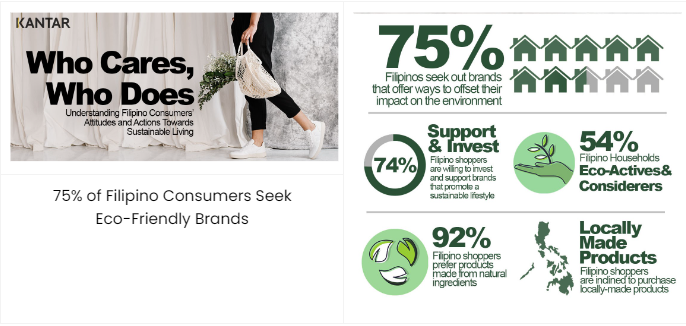
2. Integration of renewable energy sources
According to the Independent Electricity Market Operator Philippines (IEMOP), electricity demand surged in Luzon and Visayas regions, reaching 12,522MW in July and 2,456MW in May, compared to that of 2022, respectively. Compared to last year, all grids witnessed their highest levels this year. Luzon observed a 3.5% increase in demand, whereas Visayas and Mindanao regions experienced a 6.9% and 11.5% increase each.
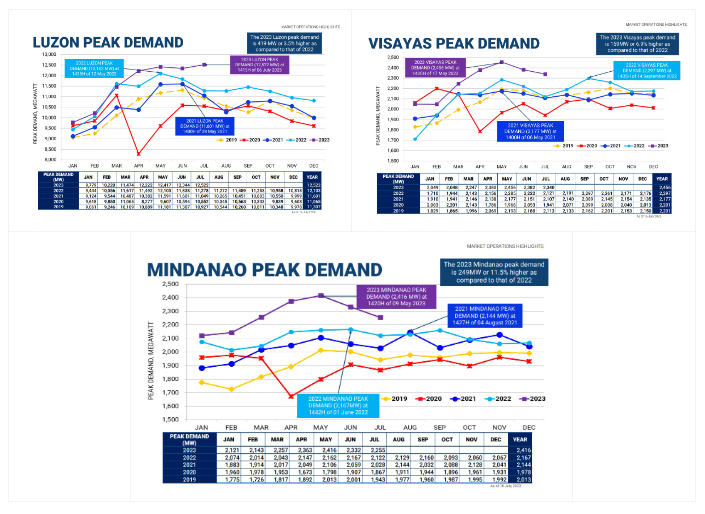
The industry is providing cost-effective and efficient solutions while reducing environmental impact. Real estate is embracing sustainability through renewable energy integration. Solar panels, geothermal systems, and eco-friendly materials can reduce carbon footprints and promote energy efficiency.
| The surging fascination with energy-efficient homes stems from growing environmental concerns. Incorporating renewable energy sources, such as solar panels and wind turbines, helps to reduce carbon footprints and advance energy efficiency goals. |
Sources:
IFC Encourages More Investments in Green Buildings and Marks Progress of [The] Green Building Sector;
IEMOP: June 2023 Market Operations Highlights;
Kantar World Panel: 75% of Filipino Consumers Seek Eco-Friendly Brands
D. Rural vs. Urban Living
Philippine cities are urbanizing rapidly, with an estimated 84% of Filipinos projected to live in urban areas by 2050. This shift brings challenges like inadequate infrastructure, poverty, safety concerns, pollution, health issues, and disasters. However, UN-Habitat sees urbanization as a chance to address these issues and create a fairer society.
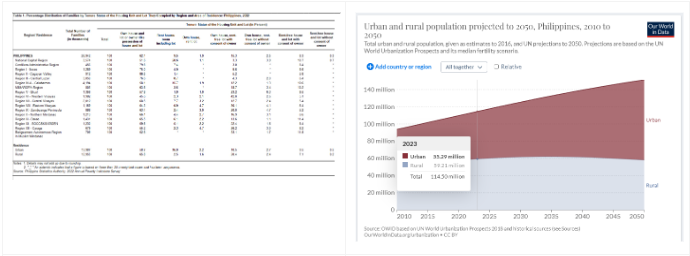
Urban and Rural Population – Philippines 2010-2050 Projections
The real estate industry adapts by developing walkable urban communities and offering spacious suburban homes, addressing the demand for urban conveniences; and suburban serenity.
1. Urban areas adapting to attract residents
World Wide Fund For Nature (WWF-Philippines) and the International Council for Local Environmental Initiatives Southeast Asia Secretariat (ICLEI SEAS) launched the 15 Philippine cities participating in the One Planet City Challenge (OPCC) 2023-2024. The program shares climate mitigation and adaptation best practices – providing insights on measuring GreenHouse Gas (GHG) emissions and reductions, setting Science-Based Targets (SBTs), and Urban Nature-Based Solutions. Protecting ecosystems benefits biodiversity and humans against societal challenges.
Cities worldwide are evolving to cater to residents’ needs by offering more outdoor spaces, expanding sidewalks and bike lanes, and repurposing properties into housing units. These changes address conducive amenities, promote healthier living, reduce congestion, mitigate carbon footprint, and make urban living more appealing.
2. Suburban areas experiencing increased demand
In 2022, the rural population in the Philippines made up 52.02% of the total population, according to World Bank data. It uncovers the diminishing rural demographic landscape of the country during the course.

The pandemic has led to a surge in demand for suburban living as people prioritize space and security. Real estate developers are responding by building new communities and improving infrastructure. Home prices are rising, and bidding wars have become more common as safety and well-being remain top priorities for homeowners.
| Urban areas are adapting to serve residents better, with more outdoor spaces and expanded sidewalks. Meanwhile, suburban areas see increased demand for larger homes, yards, and access to nature, further fueled by the pandemic. Homeowners continue to prioritize safety and well-being, leading to the projected persistence of this trend. |
Sources:
UN-Habitat – Urbanization in the Philippines: Building Inclusive and Sustainable Cities;
15 Philippine cities strengthen their journey for urban climate action in WWF’s One Planet City Challenge 2023-2024;
PSA: Table 1. Percentage Distribution of Families by Tenure Status of the Housing Unit and Lot They Occupied by Region and Area of Residence: Philippines, 2022;
Hannah Ritchie and Max Roser (2018) – “Urbanization.” Published online at OurWorldInData.org. Retrieved from: ‘https://ourworldindata.org/urbanization‘ – Urban and Rural Population – Philippines 2010-2050 projections;
World Bank data: Rural Population – Philippines, 1960-2022
Technological Advancements
The Philippines ranked 59th out of 132 economies in the 2022 Global Innovation Index. While the score dropped eight spots from the previous year, the country’s strong innovation capabilities increase the likelihood of hitting the target.
A. Virtual Tours and Remote Selling
According to the 2021 report by Adroit Market Research, the global Virtual Tour Market is projected to experience substantial growth, with a Compound Annual Growth Rate (CAGR) of 30.95% from 2021 to 2028. It is due to the increasing use of Virtual Reality (VR), Augmented Reality (AR), and Mixed Reality (MR) devices, along with the advancements in Information and Communication Technology (ICT); and Internet of Things (IoT) technologies. The virtual tour industry offers a range of products and devices with applications in real estate, tourism, and marketing. The market spans multiple regions, highlighting its immense global potential driven by technology and industry demand.
1. Rise of virtual reality and 3D tours
Virtual reality and 3D tours are revolutionizing the real estate and tourism industries on a global scale. 3D tours attract potential buyers with informative representations, while virtual reality lets tourists preview destinations before booking. Cutting-edge technologies are boosting engagement and sales across industries, with further growth anticipated.
2. Increased convenience and safety for buyers and sellers
Virtual tours offer convenience and safety even after the pandemic, providing a viable alternative to traditional in-person experiences. It allows buyers to browse properties and avoid unnecessary face-to-face interactions. For sellers, remote selling can be more cost-effective as it eliminates the need for staging and the hassles of open houses.
Virtual reality tours and remote selling are on track to become the new normal in real estate. These technological advancements streamline and facilitate the home buying and selling process and will likely persist even after the pandemic.
| The real estate industry, exemplified by HousingInteractive, has adeptly pivoted during the pandemic by embracing virtual tours and remote selling through social media platforms like Youtube, Facebook, Instagram, LinkedIn, and email. In addressing the evolving needs of homebuyers, convenience, and flexibility have emerged as top priorities. Industry professionals are proactively investing in immersive virtual experiences to effectively meet buyer demands while retaining a competitive edge in the market. |
Sources:
Virtual Tour Market Size Report, 2021-2028;
Real Estate Virtual Touring is On the Rise – Asia Property Awards
B. Contactless Solutions
Filipino consumers embraced digital payments during COVID-19, making the Philippines a leader in Southeast Asia. Popular options like GCash and Maya, with QR-based payments, gained traction. While digital payments failed to reach the targeted 50% of retail transactions by 2023, factors such as widespread mobile usage and growing merchant acceptance contributed significantly to this outcome.
1. Contactless payments and transactions
Digital contracts are another promising solution that real estate agents can leverage to facilitate safe transactions. Such agreements allow parties to sign contracts remotely, minimizing the need for in-person meetings.
2. Automation of property management processes
Furthermore, automating processes for property management, including rent collection and repair requests, can streamline transactions and reduce the need for face-to-face interactions. It can help real estate agents protect their clients’ safety while improving their bottom line and providing optimal service quality.
| Real estate agents should prioritize implementing contactless solutions in line with the government’s digital payments policy. It improves safety and convenience for buyers and sellers, boosts efficiency, and drives economic growth. Adapting to changing consumer preferences in this post-pandemic era is crucial for streamlined and secure transactions. |
Sources:
Statista Research Department, Jun 2, 2023: Digital payments in the Philippines – statistics & facts;
International Trade Administration – U.S. Department of Commerce: The Philippine Digital Payments Sector
Impact on Property Types
The government fell short of its target to build 1.6 million housing units by achieving only 66% of it. Around 3.7 million families currently live in insecure informal settlements. The demand for affordable housing is also high, with limited availability. Insufficient funding, land scarcity, and delays in permits have hindered housing production. Additionally, natural disasters have affected almost half a million homes, highlighting the need for resilient design standards. Improving public rental housing is crucial to addressing the housing shortage and affordability concerns.
The government aims to address the housing backlog in the Philippines by building 1 million low-cost housing units annually. Despite rising condominium prices, real estate remains a hedge against inflation. The leasing market shows signs of recovery with increased office leasing and workers returning to offices. Tax reforms and high remittances support property investments, while industrialization efforts may boost manufacturing competitiveness.
| Overall, improving housing production and ensuring access to affordable housing remain paramount challenges that require comprehensive solutions. |
Source:
Philippine Development Plan 2023-2028: Subchapter 2.3 Establish Livable Communities-Assessment and Challenges: Unmet housing needs;
Property Guru Asia Property Awards: The post-pandemic Philippine housing situation: ‘Golden Age’ or ‘Sick Man of Asia’?
A. Single-Family Homes
The housing market situation in the country has shown signs of improvement, as reported by the Global Property Guide’s analysis of the Philippines Residential Real Estate Market in 2023. Released in April 2023, it highlights the residential real estate price index, as indicated by the Bangko Sentral ng Pilipinas (BSP), which witnessed a year-on-year increase of 7.7% in 2022 and a quarter-on-quarter increase of 2.2%. These figures reflect a positive trend in the housing market.
1. Increased Demand for Space and Privacy
The pandemic has put a premium on homes that offer more space, privacy, and outdoor amenities. Homebuyers are increasingly searching for properties that are bigger, like single-family detached homes, with enough room for home offices, flexible living arrangements, or outdoor spaces.
According to the Philippine Statistics Authority (PSA), residential buildings dominate, comprising 71.5% of all constructions in 2022. Among them, single-type houses hold the largest share at 84.3%. Although there was a positive growth of 4.6% in residential construction, this growth rate was lower compared to the 31.4% increase observed in 2021, two years into the pandemic period.
2. Growing Interest in outdoor amenities
The demand for outdoor spaces is the new norm as people seek safety and pleasure in recreational activities. Homes with attractive features like expansive backyards, inviting swimming pools, and charming patios command premium prices. Outdoor amenities play a vital role in the real estate landscape, reflecting buyers’ prioritization of overall well-being.
| Homebuyers prioritize properties that offer more space, privacy, and outdoor amenities. Real estate professionals should emphasize the advantages of single-family homes, such as private yards, outdoor living spaces, and room for home offices or flexible living arrangements. |
Sources:
Philippines Residential Real Estate Market Analysis 2023;
Bangko Sentral ng Pilipinas Statistics – Prices;
Construction Statistics from Approved Building Permits, First Quarter 2022
B. Multi-Family Developments
The post-pandemic era has brought about significant shifts in real estate trends, particularly in multi-family developments. Responding to this demand, developers are incorporating more communal spaces and amenities into multi-family buildings, such as rooftop gardens, fitness centers, and shared work areas. With an expected rise in remote work opportunities, many multi-family developments are designed with in-unit workspaces to accommodate the needs of professionals who work from home. Ultimately, multi-family developments are poised to play a pivotal role in the post-pandemic era as people prioritize affordability and convenience in their housing choices.
Colliers predicts a recovery in the residential sector by 2023 in Metro Manila. The demand for condominiums is increasing among local professionals and foreign nationals, leading to improved occupancy rates. Rents and prices are expected to rise but remain below pre-Covid levels. Developers should focus on upscale and luxury projects and obtain green building certifications. It recommends considering joint venture agreements between foreign and local property companies.
1. Shift Towards More Flexible Living Arrangements
Developers have recognized the need for adaptation and are now providing flexible floor plans and customization options to cater to the demands of remote work and hybrid living arrangements. This thoughtful approach enables individuals to seamlessly blend their professional and personal lives while enjoying the benefits of tailored spaces.
2. Integration of Shared Workspaces and Communal Areas
Multi developments are adapting to changing needs by integrating shared workspaces and communal areas for remote workers. These amenities, including co-working spaces and meeting rooms, provide professionals with the convenience of working and socializing without leaving the building. Developers who prioritize these amenities will see increased demand for their properties.
| While single-family homes have gained popularity, multi-family developments have also witnessed shifts in consumer preferences. Buyers now seek flexible living arrangements, shared workspaces, and communal areas that foster community. Real estate agents should highlight these features when marketing multi-family developments to appeal to post-pandemic buyers. |
Sources:
Colliers Quarterly | Property Market Report – Residential | Q1 2023 | Philippines
Key Trends in Post-Pandemic Real Estate: A Recap
The COVID-19 impact has shifted how people engage with real estate. Virtual home tours have replaced in-person visits. As people reevaluate their space and lifestyle needs, there has been a growing interest in suburban and rural areas. Home offices and sustainable design are now vital considerations for buyers.
A. Embracing change and innovation
To thrive in the post-pandemic era, real estate professionals must embrace technology, virtual platforms, and expertise in growing areas such as suburban properties, home offices, sustainable energy, and eco-friendly home design. Being innovative and adaptable will help them stand out and succeed.
B. Long-term implications
The real estate industry is undergoing lasting changes due to the pandemic. The demand for properties, as well as interest in eco-friendliness and workspaces, will continue. Virtual home tours will likely become a standard for property viewing, allowing real estate agents to work remotely more effectively. The challenge is embracing innovation and adapting to changing consumer preferences in the post-pandemic era. Thriving in real estate requires the ability to innovate and meet evolving demands.
Adaptation is necessary for real estate professionals in the post-pandemic era. Understanding trends and implementing strategies fuels business growth and meets evolving client needs.
Sources:
Adaptability is Key: Real Talk about the Post-Pandemic Transition – De La Salle University




